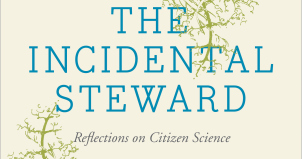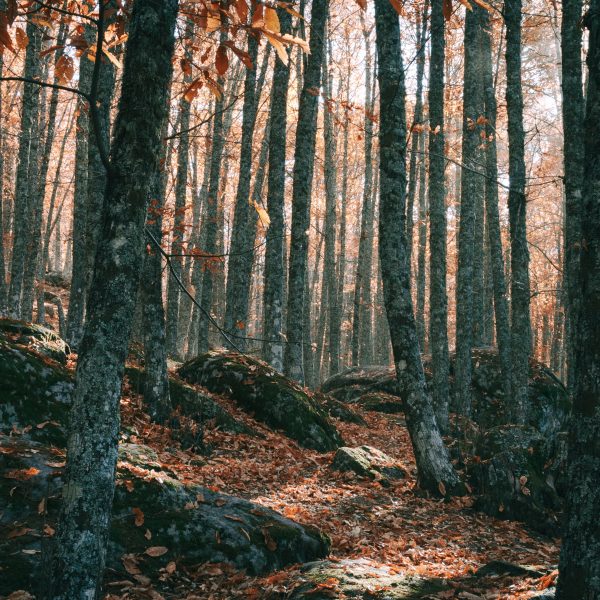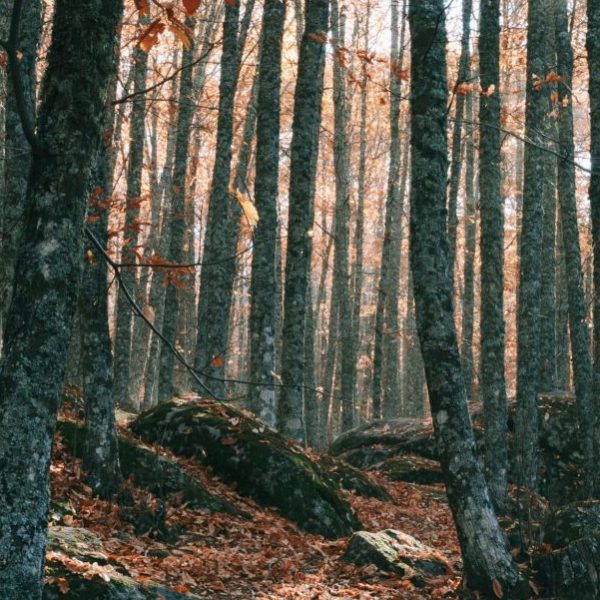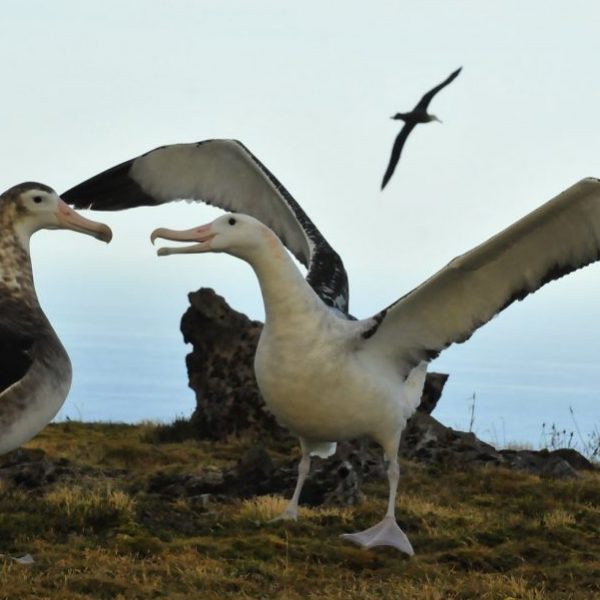Akiko Busch on Citizen Science: An Excerpt from The Incidental Steward
Akiko Busch’s new book, The Incidental Steward: Reflections on Citizen Science, plots the course of one individual and her interactions with the natural world. While most of her work is related to saving the Hudson River, this book works to understand all forms of citizen science, from community clean up activism to commuter-driven crowd-sourced data organization. The prose is beautiful and reflective, focusing on the sense of fulfillment that everyday people can achieve by working for and engaging with the world around them.
The following excerpt serves as an introduction to Busch‘s text of connection to place and others:
Akiko Busch—
 A final quality shared by many naturalists today may be their more collaborative approach. For their predecessors, the consideration of nature was often a solitary endeavor; they made their observations and documented their discoveries on solo sojourns that were often an effort to escape the frantic pace of society—Henry Thoreau’s cabin by the pond, John Muir’s walk to the gulf, Aldo Leopold’s shack by the river. Now, just as often, naturalism tends to be a collective enterprise, a community of like-minded citizens. When the snowy owls migrated from the Arctic to the lower forty- eight states in the winter of 2012 in unexpectedly high numbers, their sightings were reported on eBird, a site run by the Cornell Lab of Ornithology and the National Audubon Society, enabling the vigilant birders to share information and generate broader public interest and knowledge. In the words of Edward O. Wilson, “The stewardship of environment is a domain on the far side of metaphysics where all reflective persons can surely find common ground.”
A final quality shared by many naturalists today may be their more collaborative approach. For their predecessors, the consideration of nature was often a solitary endeavor; they made their observations and documented their discoveries on solo sojourns that were often an effort to escape the frantic pace of society—Henry Thoreau’s cabin by the pond, John Muir’s walk to the gulf, Aldo Leopold’s shack by the river. Now, just as often, naturalism tends to be a collective enterprise, a community of like-minded citizens. When the snowy owls migrated from the Arctic to the lower forty- eight states in the winter of 2012 in unexpectedly high numbers, their sightings were reported on eBird, a site run by the Cornell Lab of Ornithology and the National Audubon Society, enabling the vigilant birders to share information and generate broader public interest and knowledge. In the words of Edward O. Wilson, “The stewardship of environment is a domain on the far side of metaphysics where all reflective persons can surely find common ground.”
Participants engaged in all of these endeavors may just want to get outdoors. Or they may be motivated by a general interest in conservation. Perhaps they are monitoring conditions in their community that may have public health consequences. They may even be looking for a more serious engagement with specific issues and their potential impact on education, research, and policy. But while spending time in the natural world often brings a sense of restoration, that restoration becomes much larger if the result has some societal value. And if it furthers the partnership between scientific research and land use. Surveying vernal pools may be a regenerative way of witnessing spring, but the experience grows in meaning when its results have a tangible effect on how local planners consider the value of open space. Taking inventory of the water celery beds in the Hudson is a good excuse to spend the morning kayaking on the river, but when the data reflect measurable facts about water quality, the connection to the river goes a little deeper. Every year, my friend Doug Reed participates in “A Day in the Life of the Hudson River,” during which environmental educators team up with schoolkids to collect sediment samples, test water quality, identify fish, measure salinity levels, and otherwise learn to gather and share data about the estuary. Participation doubles, triples each year, he says. “They keep coming back. They’re hooked. That’s what happens after a student takes the first step into the river with a net.” …
When stakeholders are connected to ecology, the bond can run deep. Whether it is stepping into the river with a net, pulling up a length of invasive vine, or some other effort in experiential activism, it’s not much of a stretch to suggest that rediscovering a sense of order in the natural world is a way to find our bearings. Possibly it is a way to tap into what ecopsychologists call the “ecological unconscious.” Finding the water celery is a way of picking up the loose thread, locating a vernal pool a means of answering to some dry spell. Anytime one looks to the natural world, a larger lesson plan appears…
My own outings here may have started as part of some effort to calculate the distance between the Hudson Valley I knew as a child and the one I live in today. Maybe tallying the eels entering a Hudson River tributary or looking for the herring that come up the river to spawn in May or counting the eagles for the midwinter census count could supply some of those numbers that help to gauge that distance.
And since then I’ve wondered, too, if these excursions were some effort to continue that walk in the woods with my father so many years ago. From time to time over the years, I have revisited those woods. More than once I have cyberstalked them, finding that Google Earth is capable of returning me to those trees and meadows. From my desk, with my cursor, miles and years away, I sometimes do my best to follow those familiar paths. But it is not easy to do, the trails overgrown with weeds, the thickets too tangled, the apple trees gone. And the screen on my laptop does not have the resolution to tell me whether the woods of maple, beech, and birch are giving way to oak and hickory, as has been predicted. Nor is it clear whether the populations of chickadees and purple finches are on the decline while those of the indigo bunting and cardinal are increasing.
But sometimes my trip is accompanied by a different sound- track. Thewildernessdowntown.com is an interactive film created by director Chris Milk that invites visitors to visit their childhood homes. After they have typed in the address, Google Maps, Street View, and music by the group Arcade Fire collaborate to take the visitor there as the lyrics sing out, “When the lights cut out, I was left standing in the wilderness downtown.” A film captures a young man running down a street, his footsteps pounding, a constellation of birds exploding in the sky. The camera pans the bygone streets and neighborhood, then pulls back, and the landscape spins.
“Write a postcard of advice to the younger you that lived there then,” the website suggests.
I remember the hundred thousand or so observations that Daniel Smiley wrote over a lifetime on index cards and the thousands of notations that have been made over the decades in the Hudson River Almanac. And I wonder at this innate and persistent desire to keep ourselves connected to the places we love, whether it is on an interactive music video, in a digital almanac, or on three- by-five-inch green note cards. All of them recognize some essential protocol about documenting and keeping. All are good blueprints for the postcard I imagine I might write. “I miss you, I miss who all of us were, I miss our lives there together,” I might say. I might find myself more anxious than that. Perhaps I would say, “It is all so long ago. But where are the apple trees? ” Yet that wouldn’t begin to say it all either.
So the chapters that follow came to work as a letter to the place I once lived, more epistolary than the meticulous field notebooks kept by the scientists I encountered, citizen or otherwise. And the excursions here came to be some series of outings parallel to that walk in the woods I took with my father forty years ago. But be- cause “trespass” has come to have a broader meaning now than it did then, I have tried to arrange the words on these pages as some revised version of those small fabric signs, some equivalent way to mark out, to know, to claim the place where I live now.
Excerpted from The Incidental Steward: Reflections on Citizen Science. Copyright © 2013 by Akiko Busch. All rights reserved.


























